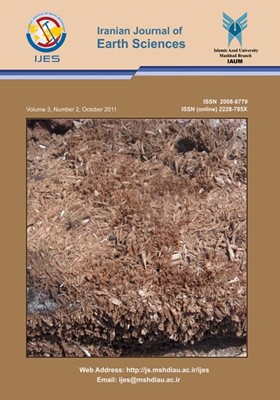Source Rock evaluation, Modelling, Maturation, and Reservoir characterization of the Block 18 oilfields, Sab’atayn Basin, Yemen
الموضوعات :A.S. Alaug 1 , D. Leythaeuser 2 , B. Bruns 3 , A.F. Ahmed 4
1 - Taiz University, Faculty of Applied Sciences, Geology Department, Taiz 6803, Yemen.
2 - RWTH Aachen University, Inst. of Geology and Geochemistry of Petroleum and Coal, Germany.
3 - RWTH Aachen University, Inst. of Geology and Geochemistry of Petroleum and Coal, Germany.
4 - Taiz University, Faculty of Applied Sciences, Geology Department, Taiz 6803, Yemen.
الکلمات المفتاحية: Yemen, modelling, Madbi formation, maturation, Hydrocarbon potential, Petromod, Alif member, Block 18,
ملخص المقالة :
A total of 183 core and cutting samples from seven exploratory wells were selected to be analyzed by Rock-Eval pyrolysis. These cores have been drilled through the Lam and Meem Members of the Madbi Formation and contain the major source rocks of Yemen´s sedimentary basins. Contents of total organic carbon were measured and Rock-Eval pyrolysis was performed to evaluate the hydrocarbon potential of Block 18 oilfields in central Yemen. Most of the studied samples have fair to excellent petroleum generation potential as shown by the results of PP, PI, HI and TOC. They have also sufficient TOC values with an average value of 1.48 wt% and a maximum value of 12.34 wt% with a good petroleum potential averaging 4.54 kg HC/ton of rock and a maximum value of 44.78kg HC/ton of rock. HI values of the Madbi Formation in its full thickness range from 16 mg to 1114 mg HC/g TOC with an average value of 273 mg HC/g TOC. Kerogen types II and III, and a small amount of type I can be observed. These kerogens are thermally mature and mostly within the hydrocarbon generation zone. In a numerical simulation approach the thermal and burial history of the Alif-1 well, which is representative for this area was modelled. Using vitrinite reflectance data, as means of calibration, the modelling results were subjected to a sensitivity analysis concerning paleo-heat flow, radiogenic heat production, basement thickness and eroded overburden or maximum burial, respectively. The calculated temperature during deepest burial of the source rock layers of the Madbi Formation reached 158 °C for the Lam Member and 182 °C for the Meem Member. Compliance with the measured R0 values, used as calibration parameter, could be achieved by assuming an erosion of 1100 m of the Upper Tawilah Group. The heat flow is maximized at the onset of basin rifting in Late Jurassic to 90 mW/m2 having a base level of 60 mW/m2. Thus, the Lam Member has reached the main oil to wet gas window at its deepest burial whereas the Meem Member has undergone the wet gas window in its full thickness. The isopach map of the Alif Member, as the main reservoir in the studied area, indicates thickening of the sandstone unit towards the eastern and western parts of Block 18 around the Dostour Al-Wahdah gasfield in the east and at the Alif oilfields in the west.


